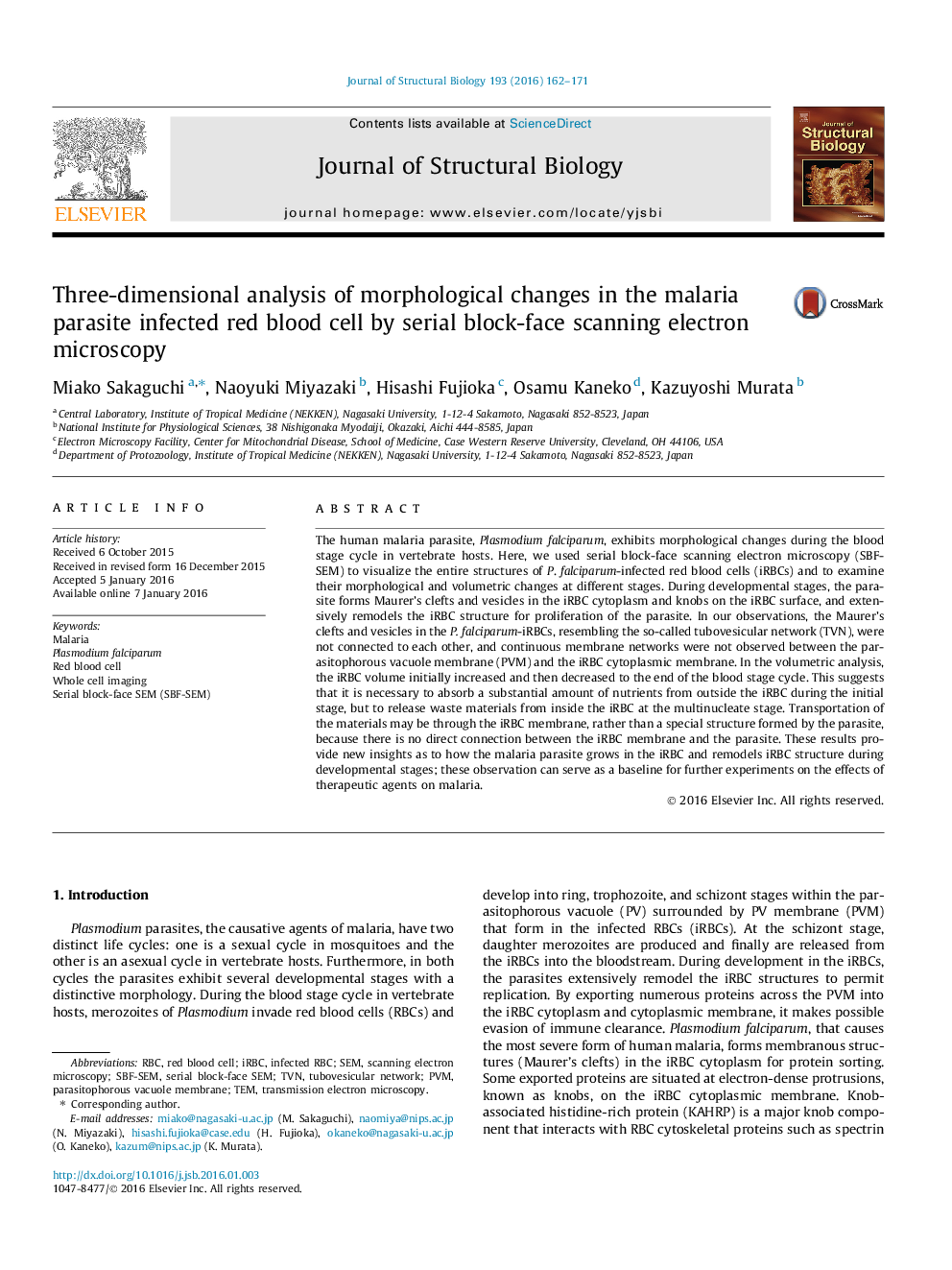| Article ID | Journal | Published Year | Pages | File Type |
|---|---|---|---|---|
| 2828423 | Journal of Structural Biology | 2016 | 10 Pages |
The human malaria parasite, Plasmodium falciparum, exhibits morphological changes during the blood stage cycle in vertebrate hosts. Here, we used serial block-face scanning electron microscopy (SBF-SEM) to visualize the entire structures of P. falciparum-infected red blood cells (iRBCs) and to examine their morphological and volumetric changes at different stages. During developmental stages, the parasite forms Maurer’s clefts and vesicles in the iRBC cytoplasm and knobs on the iRBC surface, and extensively remodels the iRBC structure for proliferation of the parasite. In our observations, the Maurer’s clefts and vesicles in the P. falciparum-iRBCs, resembling the so-called tubovesicular network (TVN), were not connected to each other, and continuous membrane networks were not observed between the parasitophorous vacuole membrane (PVM) and the iRBC cytoplasmic membrane. In the volumetric analysis, the iRBC volume initially increased and then decreased to the end of the blood stage cycle. This suggests that it is necessary to absorb a substantial amount of nutrients from outside the iRBC during the initial stage, but to release waste materials from inside the iRBC at the multinucleate stage. Transportation of the materials may be through the iRBC membrane, rather than a special structure formed by the parasite, because there is no direct connection between the iRBC membrane and the parasite. These results provide new insights as to how the malaria parasite grows in the iRBC and remodels iRBC structure during developmental stages; these observation can serve as a baseline for further experiments on the effects of therapeutic agents on malaria.
